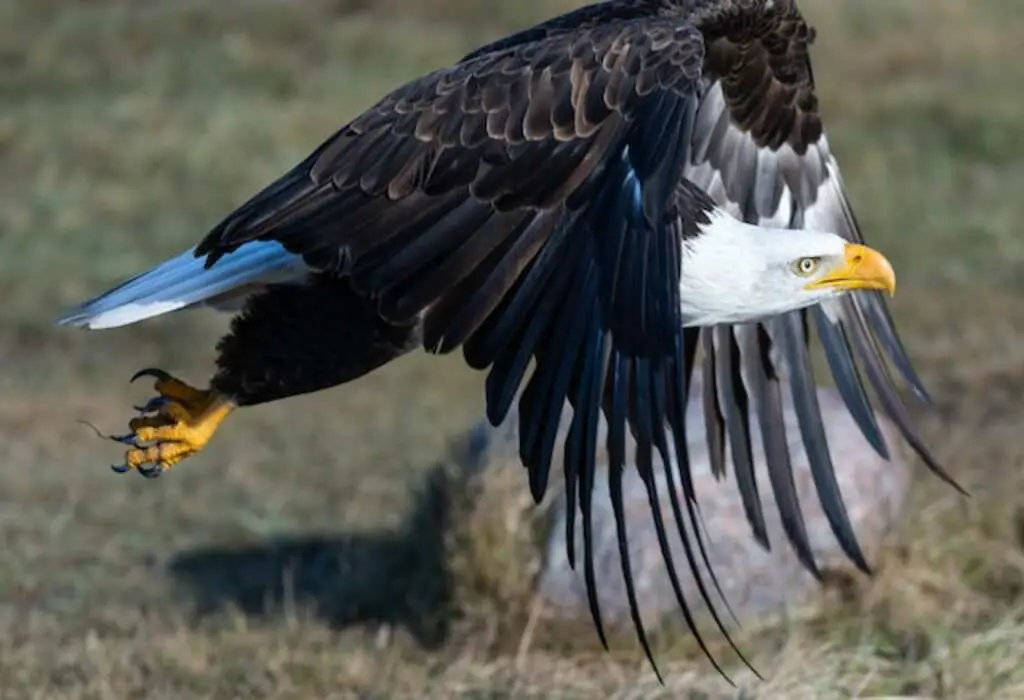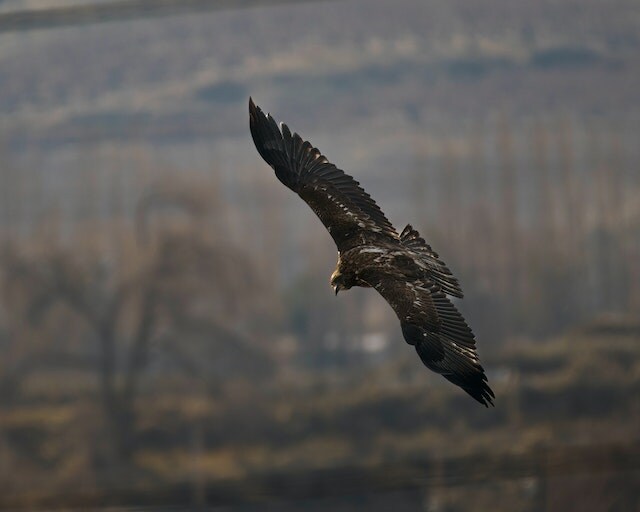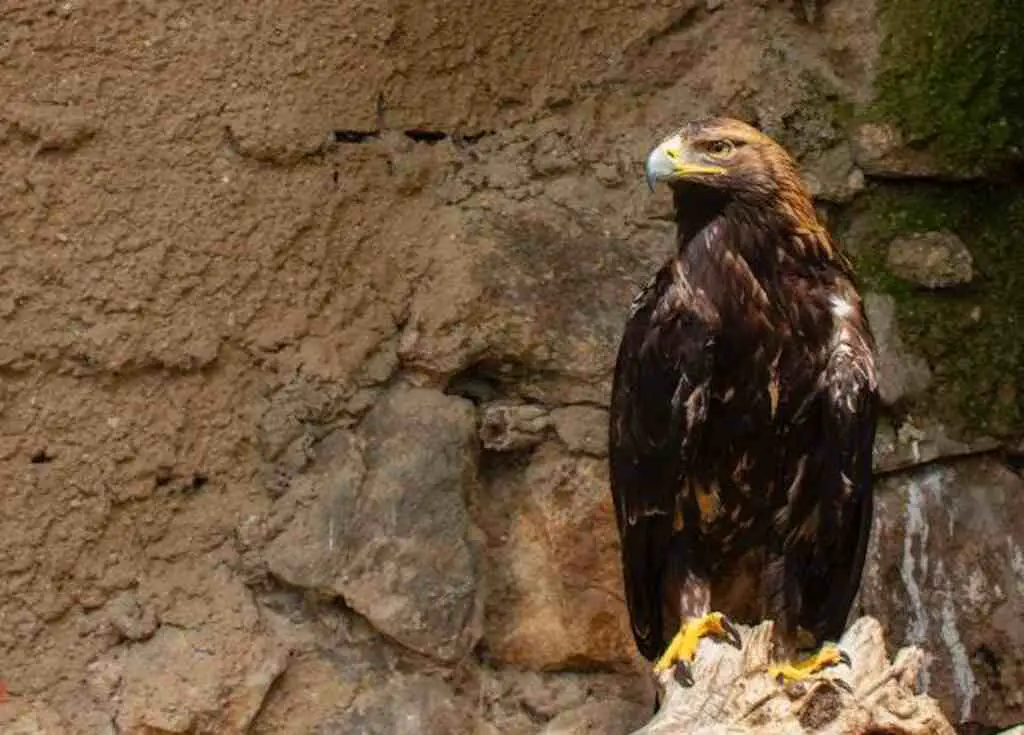Do Eagles Eat Dogs? A Pawsitively Intriguing Question! The intricate interplay between apex predators and domesticated animals has long captivated the collective imagination.
In this article, we delve into the scientific intricacies surrounding the diet of eagles, their hunting behavior, and their interactions with various prey species, including dogs.
Get ready to separate fact from fiction and discover the truth about eagles’ dietary habits and their potential interactions with our furry friends.
Let’s soar into this enlightening journey together!
Table of Contents
- 1 Key Takeaways
- 2 Understanding the Diet of Eagles
- 3 Examining the Hunting Behavior of Eagles
- 4 The Prey Preferences of Eagles
- 5 Debunking the Myth: Eagles and Dogs
- 6 What Do Eagles Actually Eat?
- 7 Exploring the Impact of Eagle Predation on Small Animals
- 8 How Eagles Hunt and Capture Prey
- 9 Do Eagles Eat Dogs
- 10 Instances of Eagles Interacting with Dogs
- 11 The Importance of Responsible Pet Ownership in Eagle Populated Areas
- 12 Coexisting with Eagles: Tips for Pet Owners
- 13 Frequently Asked Questions
- 13.1 What is the average lifespan of an eagle?
- 13.2 Can eagles eat other domestic animals, such as cats or rabbits?
- 13.3 How do eagles locate their prey from such high altitudes?
- 13.4 Are there any known cases of eagles attacking humans?
- 13.5 What measures can pet owners take to protect their animals from eagle attacks?
- 14 Conclusion
- 15 Author
Key Takeaways
- Eagles primarily consume small mammals, birds, and fish, but do not include domestic pets like dogs in their natural diet.
- The idea that eagles pose a threat to dogs is based on isolated incidents and exaggerated stories.
- Eagles play a crucial role in regulating prey populations and maintaining overall ecosystem health.
- Dog owners should be aware of eagle behavior and take necessary precautions to protect their pets.

Understanding the Diet of Eagles
The diet of eagles is primarily comprised of small mammals, birds, and fish, with occasional larger prey such as rabbits or snakes.
These eagle feeding habits are well-documented and have been studied extensively by researchers and conservationists.
Eagles are opportunistic hunters, often scanning their surroundings from high perches and swooping down to catch their prey with their sharp talons.
They have excellent eyesight, allowing them to spot potential prey from great distances.
Conservation efforts have focused on protecting the habitats of these birds and ensuring a stable food supply, as their feeding habits are closely tied to the health of the ecosystem.
Understanding the diet and feeding behaviors of eagles is crucial in developing effective conservation strategies.
Examining the hunting behavior of eagles provides further insights into their ecological role and their impact on prey populations.
Examining the Hunting Behavior of Eagles
Examining the hunting behavior of eagles reveals insights into their predatory nature and dietary preferences.
Eagles are highly skilled hunters, employing various techniques to catch their prey. One common method is soaring high in the sky, using their exceptional vision to spot potential targets on the ground.
Once a suitable prey is identified, eagles dive at astonishing speeds, reaching velocities that can exceed 100 miles per hour.
This swift descent allows them to surprise their prey and catch it off guard. Eagles also utilize their powerful talons to secure their prey, gripping it tightly and preventing any chance of escape.
When it comes to prey selection, eagles exhibit a wide range of preferences.
While their diet primarily consists of small mammals, such as rabbits and squirrels, they are also known to prey on birds, reptiles, and even fish.
Understanding the hunting behavior and prey preferences of eagles provides valuable insights into their role as top predators in their ecosystems, and how they contribute to the balance of nature.
Transitioning into the subsequent section about the prey preferences of eagles, it is important to further explore the specific types of prey that eagles tend to target.
The Prey Preferences of Eagles
One interesting aspect to consider is the wide variety of prey that eagles have been observed to target in their hunting activities.
Eagles are opportunistic predators, and their feeding habits are shaped by their environment and the availability of prey.
While eagles are commonly associated with catching fish, they are also known to prey on other animals such as small mammals, reptiles, and birds.
Their predation patterns vary depending on their geographic location and the specific species of eagle.
For example, the African fish eagle primarily feeds on fish, while the golden eagle is known to target small mammals such as rabbits and squirrels.
This diversity in prey preferences allows eagles to adapt to different ecosystems and maintain a balanced diet.
Understanding the range of prey that eagles consume helps to debunk the myth that eagles eat dogs, as they generally do not target domestic pets as part of their natural diet.

Debunking the Myth: Eagles and Dogs
Contrary to popular belief, the dietary preferences of eagles do not include domestic pets such as dogs. Debunking the myths surrounding eagle and dog interactions is imperative to dispel common misconceptions.
Eagles are opportunistic predators with a diverse diet, primarily consisting of fish, small mammals, and birds.
While eagles are known for their impressive hunting skills, there is no evidence to suggest that they actively seek out dogs as prey.
It is important to understand that eagles are efficient hunters that target prey based on availability and ease of capture.
The idea that eagles pose a threat to dogs is largely based on isolated incidents and exaggerated stories.
To gain a comprehensive understanding of eagle feeding habits, it is essential to explore what eagles actually eat.
What Do Eagles Actually Eat?
With razor-sharp talons and a fierce gaze, the majestic eagle soars through the sky in search of its preferred prey, which includes a wide variety of creatures from fish swimming in rivers to small mammals scurrying through fields, and even birds fluttering among the treetops.
Eagles are opportunistic predators, and their feeding habits vary depending on factors such as location and availability of prey.
They have strong beaks capable of tearing flesh and devouring their catch. Fish make up a significant portion of their diet, especially for species like the bald eagle.
Additionally, eagles may also prey on small mammals like rabbits and squirrels, and birds such as waterfowl and pigeons.
Their impressive hunting skills and adaptability allow eagles to thrive in diverse habitats.
Exploring the impact of eagle predation on small animals will shed light on the ecological dynamics of these magnificent birds.
Exploring the Impact of Eagle Predation on Small Animals
The impact of eagle predation on small animals can provide valuable insights into the ecological dynamics of these formidable birds.
Eagle predation plays a crucial role in regulating prey populations, shaping community structure, and maintaining overall ecosystem health.
Small animals, such as rabbits, rodents, and fish, are frequently targeted by eagles due to their abundance and vulnerability.
The predation pressure exerted by eagles can lead to changes in the behavior, distribution, and abundance of these small animals.
For example, the fear of predation may cause small animals to alter their foraging patterns or seek shelter in different areas.
Additionally, the removal of certain prey species by eagles can have cascading effects on the entire food web.
Understanding the impact of eagle predation on small animals is therefore essential for comprehending the intricate dynamics of ecosystems.
This knowledge can further inform conservation efforts and management strategies aimed at preserving both eagles and their prey.
Transitioning into the subsequent section about ‘how eagles hunt and capture prey,’ it is important to examine the various strategies employed by these birds to successfully capture their prey.

How Eagles Hunt and Capture Prey
One fascinating aspect of eagle behavior is their remarkable ability to employ various hunting strategies, enabling them to capture prey with skill and precision.
Eagles have developed a range of hunting techniques that allow them to effectively capture their prey.
One such technique is called stooping, where the eagle dives from a great height to surprise and catch its prey.
This method requires the eagle to have excellent eyesight and agility, as it needs to accurately judge the distance and speed of its target.
Eagles also use a hunting technique called perching, where they patiently wait on a high vantage point for their prey to come within striking distance.
Additionally, eagles have adaptations such as sharp talons and powerful beaks that aid in capturing and killing their prey.
Understanding these hunting strategies and adaptations provides insight into how eagles interact with different types of prey, including instances of eagles interacting with dogs.
Do Eagles Eat Dogs
While it is extremely rare, there have been a few isolated incidents of eagles attacking small dogs. However, such occurrences are highly unusual and not representative of typical eagle behavior. Eagles primarily prey on fish, small mammals, and birds, posing no significant threat to well-sized dogs.
Instances of Eagles Interacting with Dogs
Instances of eagles interacting with dogs highlight the potential risks and dangers that can arise when these two species come into contact with each other.
It is important for dog owners to be aware of eagle behavior and take necessary precautions to ensure the safety of their pets.
- Eagles are opportunistic predators and may perceive small dogs as potential prey.
- Eagles have powerful talons and beaks that can cause serious injuries to dogs during an attack.
- Dogs may instinctively try to defend themselves, leading to potential harm to both the dog and the eagle.
To minimize the risk of such interactions, dog owners should avoid leaving their pets unattended in areas known to be frequented by eagles.
It is also recommended to keep dogs on leashes and to monitor their behavior closely when in eagle-populated areas.
Understanding eagle behavior and taking appropriate measures can help promote coexistence between these two species.
The importance of responsible pet ownership in eagle populated areas cannot be overstated.
The Importance of Responsible Pet Ownership in Eagle Populated Areas
In the realm of pet ownership, the harmonious coexistence between canines and the majestic predators of the sky requires a responsible approach when residing in areas inhabited by eagles.
Responsible pet ownership is crucial in these areas due to the potential threat of eagle predation on small animals.
Eagles are opportunistic predators and may view dogs, particularly small breeds, as potential prey.
It is important for pet owners to take necessary precautions to ensure the safety of their dogs, such as keeping them on a leash when outdoors, providing secure enclosures, and avoiding leaving them unattended.
Furthermore, pet owners should be aware of the local eagle population and their behaviors, as well as seek guidance from wildlife experts or local authorities if needed.
By promoting responsible pet ownership and understanding the risks associated with eagle predation, owners can take proactive measures to protect their beloved pets in these environments.
Transitioning into the subsequent section about ‘coexisting with eagles: tips for pet owners’, it is essential to be mindful of the potential risks while enjoying the natural beauty of eagle-populated areas.

Coexisting with Eagles: Tips for Pet Owners
To ensure the safety of cherished pets in areas inhabited by majestic predators, it is essential for pet owners to adopt responsible practices that promote a harmonious coexistence with eagles.
Coexisting with eagles requires pet owners to implement preventive measures to protect their beloved companions.
Firstly, it is crucial to keep dogs on a leash during walks, as this minimizes the risk of them straying too far and encountering an eagle.
Additionally, pet owners should avoid leaving their dogs unattended in outdoor spaces, especially if there are known eagle habitats nearby.
Ensuring that the backyard is securely fenced can also prevent eagles from accessing the area.
Furthermore, understanding eagle behavior and training pets accordingly can contribute to a safer coexistence.
Training dogs to respond to commands and avoiding behaviors that may provoke eagles, such as excessive barking or chasing, can decrease the likelihood of confrontations.
By following these tips, pet owners can create an environment where beloved pets can thrive while sharing their space with majestic eagles.
Frequently Asked Questions
What is the average lifespan of an eagle?
The average lifespan of eagle species varies, with some living up to 30 years in the wild. Eagles are known for their remarkable longevity, showcasing their adaptability and resilience in the natural world.
Can eagles eat other domestic animals, such as cats or rabbits?
Eagles have a diverse diet that includes small mammals, birds, and fish. While they primarily hunt for prey within their natural habitats, there have been rare instances of eagles preying on domestic animals such as cats or rabbits. This behavior is attributed to their efficient hunting techniques and opportunistic nature.
How do eagles locate their prey from such high altitudes?
Eagles employ sophisticated hunting techniques and possess remarkable vision capabilities to locate their prey from high altitudes. Their keen eyesight, aided by specialized retinas and a high density of cones, allows for precise targeting and tracking of potential food sources.
Are there any known cases of eagles attacking humans?
There have been rare cases of eagles attacking humans, primarily when they feel threatened or provoked. Eagle behavior towards smaller animals is influenced by human activities, such as habitat destruction and encroachment.
What measures can pet owners take to protect their animals from eagle attacks?
Pet owners have a responsibility to protect their animals from potential eagle attacks. Using eagle deterrents such as scare devices or modifying the environment can help mitigate the risk. Creating a safe and secure environment is crucial for pet safety.

Conclusion
In conclusion, it is crucial to dispel the myth that eagles eat dogs, as they do not typically prey on domestic pets.
Eagles have specific dietary preferences and primarily feed on small to medium-sized mammals, birds, and fish.
While there have been rare instances of eagles interacting with dogs, these cases are extremely uncommon.
Responsible pet ownership, such as keeping dogs on leashes and supervising their outdoor activities, is essential in areas where eagles are present.
By coexisting responsibly with eagles, we can ensure the safety of both our pets and these magnificent birds.
For example, a case study conducted in a region with a high eagle population found that by implementing leash laws and educating pet owners, the number of reported eagle-dog interactions decreased significantly, promoting a harmonious coexistence between humans, pets, and eagles.


